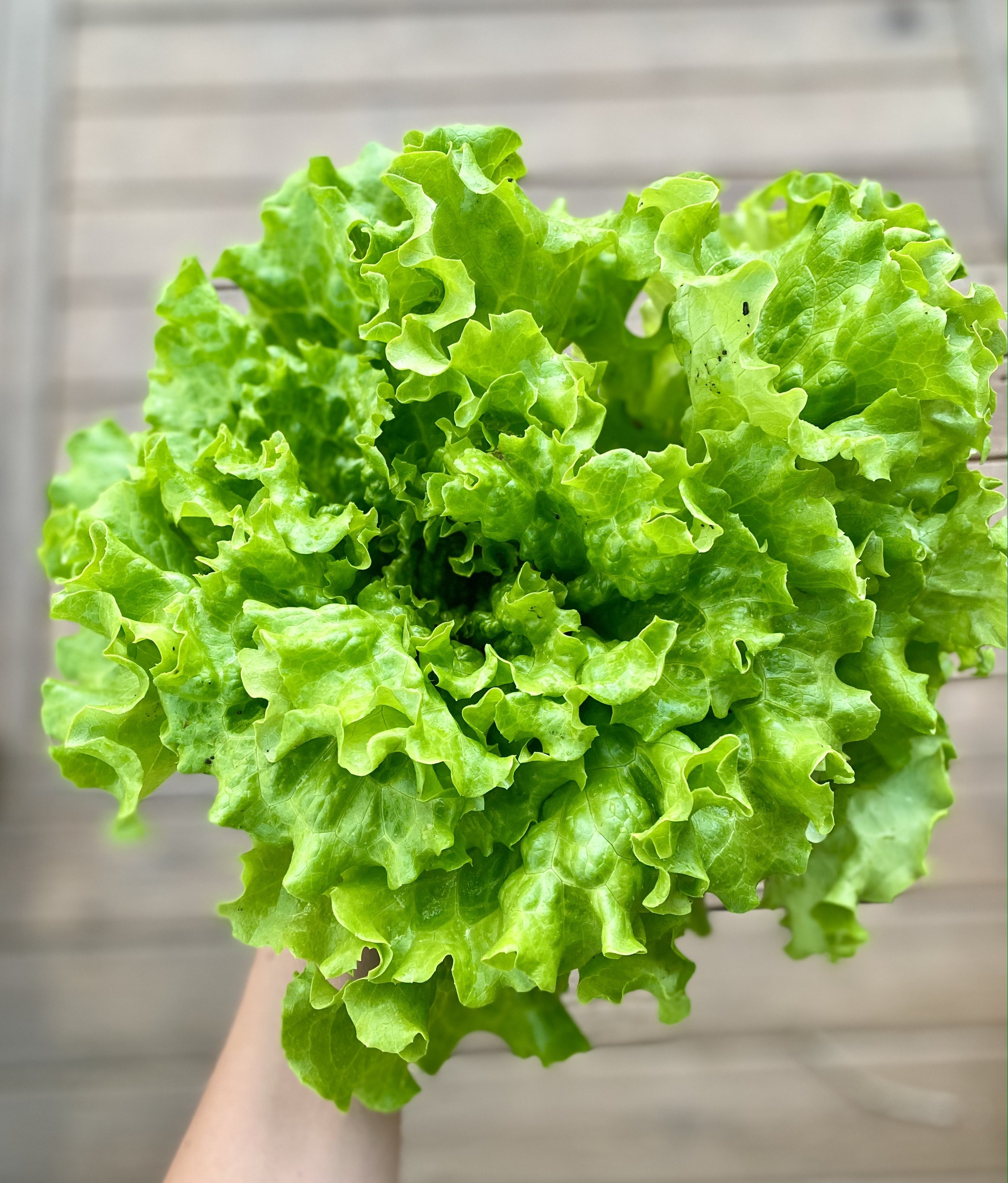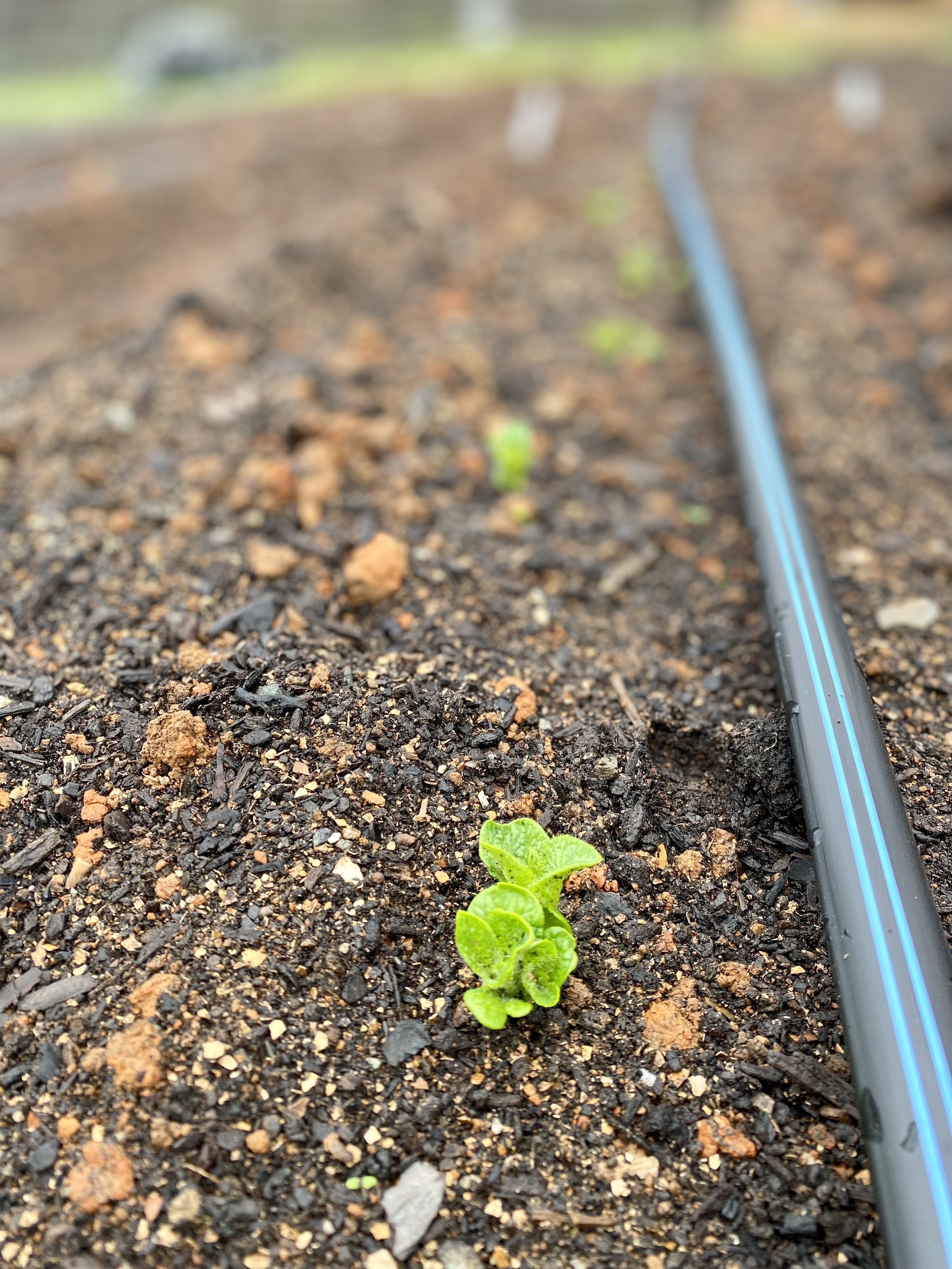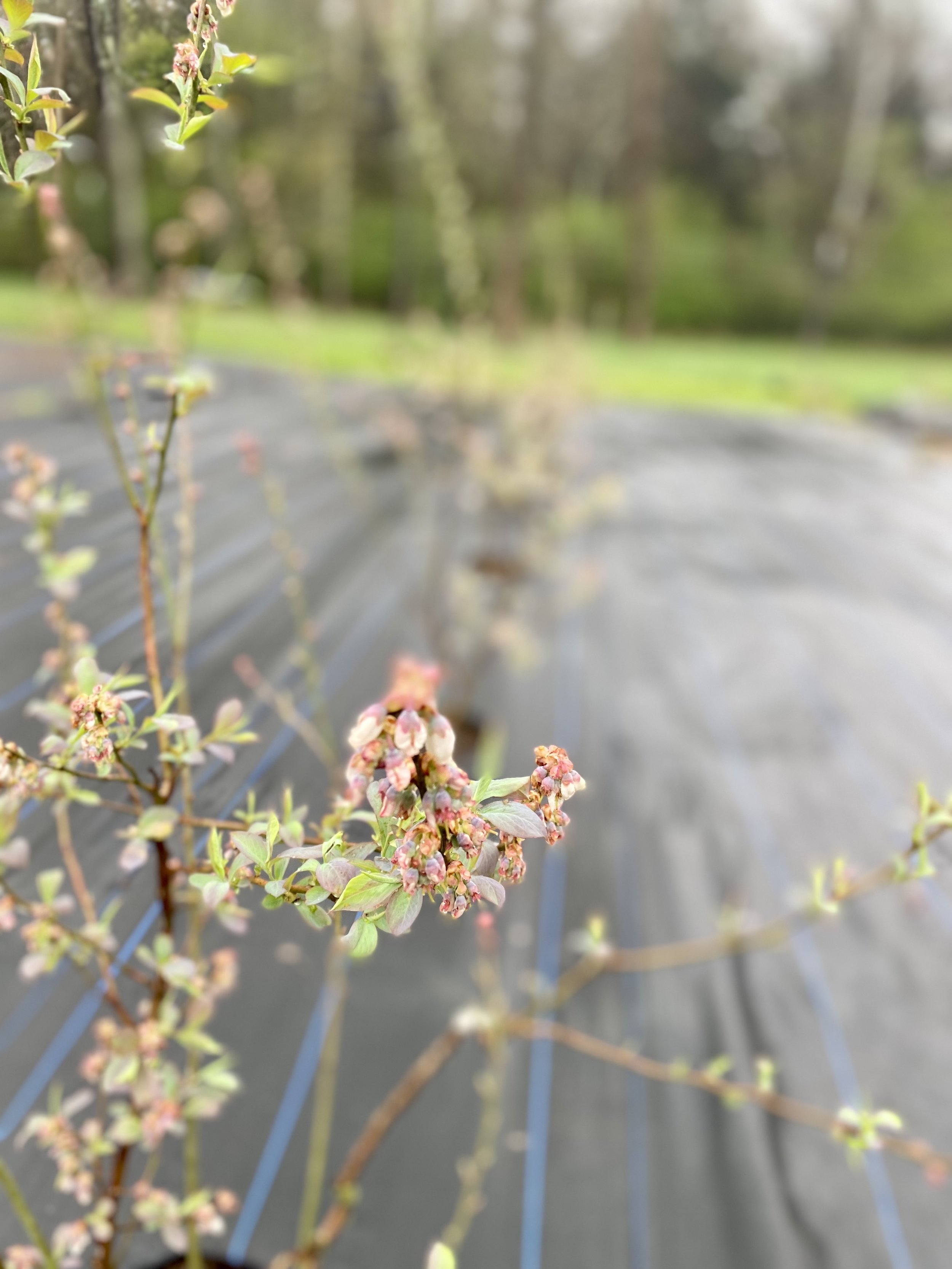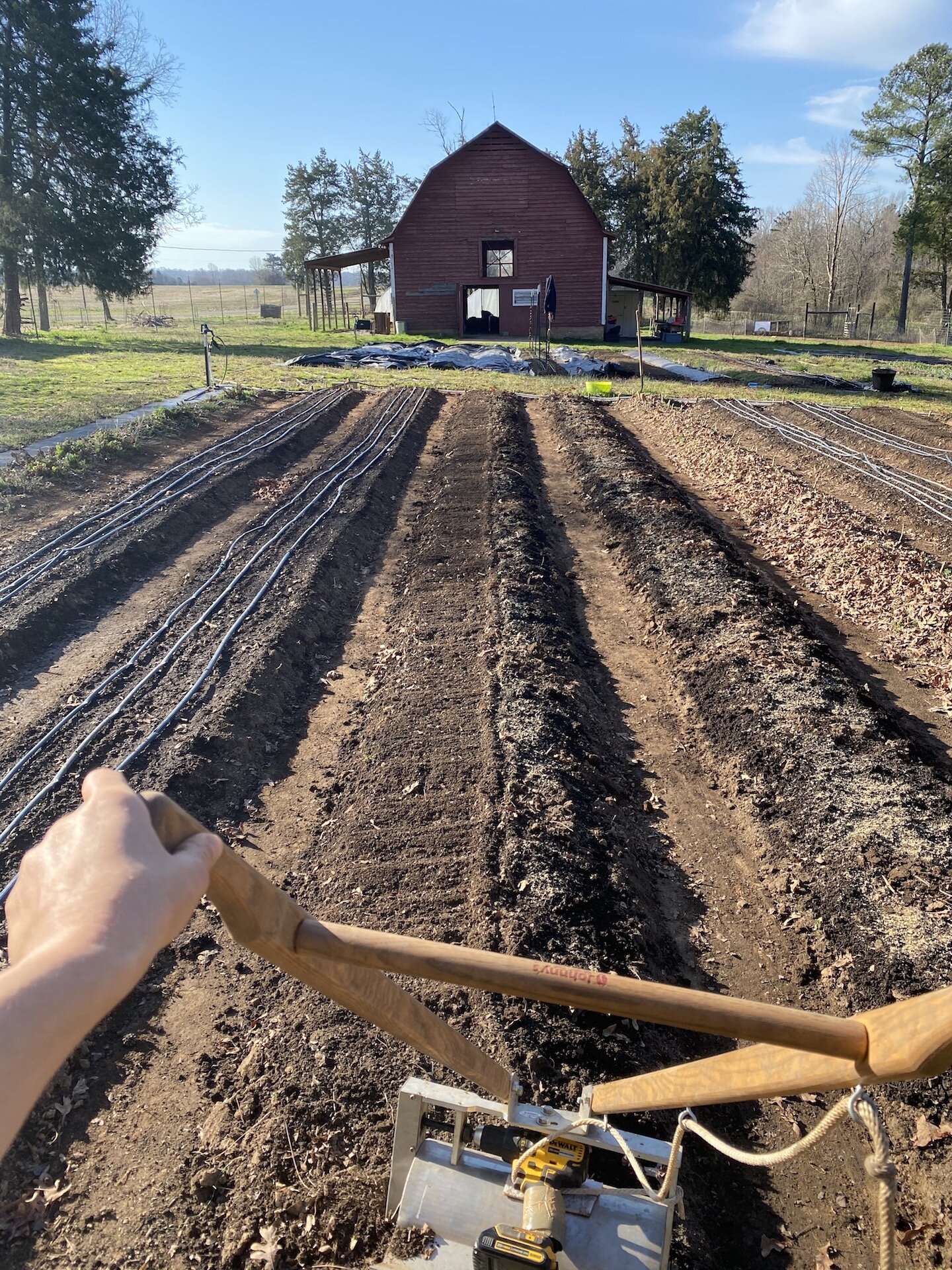Farm Notes
Thank goodness, we made it to April! I don’t know about y’all, but the past month has just felt HARD – between hustling to get thousands of plants in the ground (and keeping them alive through major frosts), battling with squirrels who seem hell bent on eating all our plants, sick family members, inconsistent childcare, issues with our well water, etc – it’s all felt a bit overwhelming. So while I love spring, I always forget that around here, the month of March is absolutely non-stop. Alas! We’ve made it through one of the busiest times of the growing season, and I feel like we (and the plants!) are finally hitting our stride.
Just this morning, I was walking around the farm and could see signs of new life that had been dormant only a few weeks ago. Suddenly, the freshly planted asparagus has shot up, the new blackberry plants are leafing out, blueberry bushes are blooming, potatoes have emerged above ground, and our lettuces are looking extra-lush. The longer + warmer days have made a world of a difference, and seeing all the new growth has put some much needed pep in this tired farmer’s step.
In other exciting news, our Spring CSA officially starts next week! I can’t believe it’s already here, but I’m happy to report that we have an abundance of gorgeous swiss chard, lettuces, asian greens, radishes, etc that will be heading home with our awesome CSA members next Thursday (if you are a CSA member, I’ll be sending an email to you on Monday to remind you about all the details for our first pick up on Thursday, April 7th).
And while our early spring veggies have been busy growing and are getting ready to be harvested, I’ve been busy seeding more of our summer crops like zucchini, cucumbers, and okra. These are crops that are easily started at home and usually only need about 4 weeks from the time of seeding to when they can be transplanted, so if you’re starting your own seeds, give these plants a try! A reminder that THIS is a great free online tool to figure out when to start seeds for each crop based on your climate/frost dates.
Another thing I wanted to help clarify for any new gardeners is which plants should be planted directly into your garden as a seed, versus which plants are best transplanted as an established seedling. Here is a quick guide on which plants to grow from seed vs. seedlings:
Crops to plant as SEEDS:
Carrots, beets, arugula, baby kale, looseleaf lettuces, radishes, turnips, mustard greens, beans and peas, corn
Crops to plant as SEEDLINGS:
Tomatoes, eggplant, peppers, onions, most brassicas (kale, cauliflower, broccoli, etc), okra, fennel, most herbs (basil, thyme, rosemary, etc)
A note that cucurbits (ie summer and winter squash, cucumbers, melons) can be planted either directly by seed or as seedlings. If starting from seed, it takes 3-4 weeks from when you start the seed to being ready to transplant in the bed.
Hopefully this info is helpful as your spring gardens get growing! As always, don’t hesitate to reach out if you have any questions or just need someone to bounce ideas off… I’m here for you! :)
Kitchen Notes
Every spring without fail, I start craving anything + everything GREEN. Which is why I love this recipe for a Spring Greens Soup, lightly adapted from the blog Kale & Caramel. The original version of this soup features roasted fennel, which I love, so I’ve gone a step further and added roasted cauliflower for extra body and sweet, caramelized goodness.
So while this 100% plant-based soup definitely falls into the “healthy” category – it’s full of flavor thanks to all the sweet roasted veggies, bright acidity from lemon juice + zest, zippy greens and vibrant herbs. It may seem like a lot of ingredients, but I’ll bet they are things you already have on hand – and if not, everything can be easily sourced.
SPRING GREENS SOUP WITH ROASTED FENNEL & CAULIFLOWER
INGREDIENTS
Roasted Fennel & Cauliflower
4 cups sliced fennel bulb, green fronds reserved
4 cups coarsely chopped cauliflower
4 tablespoons olive oil
1/4 teaspoon sea salt
1/4 teaspoon fennel seeds (optional)
fresh ground pepper, to taste
For the Soup
Roasted fennel and cauliflower, from above
2 cups diced yellow onion
2 tablespoons olive oil
1/4 teaspoon sea salt
Freshly ground pepper, to taste
2 teaspoons minced garlic
6 cups vegetable broth
1 lemon, zested and juiced
6 cups spinach
1 cup arugula
1 cup fennel fronds
1/2 cup roughly chopped chives
1/4 cup roughly chopped mint
1/4 teaspoon sea salt, plus more to taste
Toppings (optional)
Thinly sliced radishes
Carrot top gremolata (see recipe here)
Fennel fronds
Drizzle of olive oil
INSTRUCTIONS
Roasted Fennel & Cauliflower
Preheat the oven to 400ºF. Line a rimmed baking sheet with parchment paper or foil.
Lay the sliced fennel and chopped cauliflower on the baking sheet in an even layer, and drizzle with olive oil and sprinkle with salt, pepper, and fennel seeds (if using). Toss gently to coat the mixture evenly. Roast for 30-35 minutes until tender and beginning to brown. Flip the vegetables halfway through roasting to ensure even browning.
For the Soup
Heat the olive oil in a large pot or dutch oven over medium heat. Add the diced onion, salt and pepper and sauté until golden brown, stirring occasionally.
Add the garlic and stir another minute. Add the vegetable broth, lemon zest + lemon juice, as well as the roasted fennel + cauliflower and bring the mixture to a simmer. Simmer gently for 10 minutes.
Remove the pot from heat, add the spinach, arugula, fennel fronds, chives and mint. Stir to submerge in the soup, cover, and let the greens to wilt in the heat of the broth for a few minutes.
Transfer the whole pot of ingredients to a high speed blender and blend until completely smooth (you'll likely need to do this in batches). Return to the pot, taste, and add more salt and pepper as needed.
Garnish with an assortment of sliced radishes, a drizzle of olive oil, fennel fronds, etc. A topping of crunchy pistachio + carrot top gremolata is especially lovely.
Todays Stats
Low temp: 36F
High temp: 65F
Sunrise: 7:03am
Sunset: 7:39pm
Moon phase: New moon
Additional notes: Sunny and breezy











